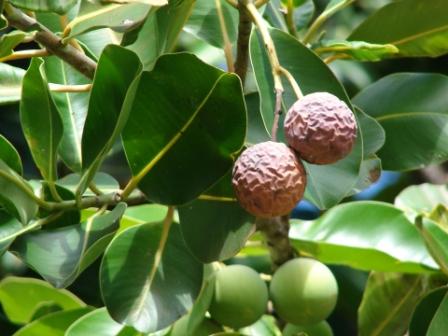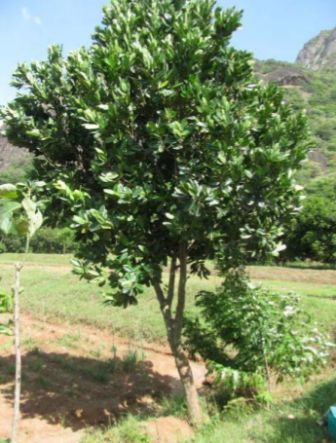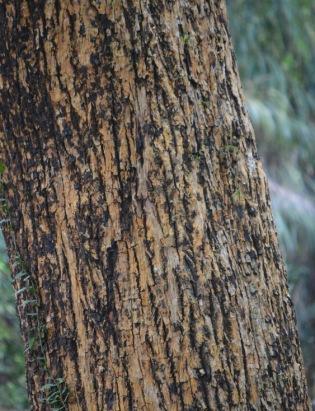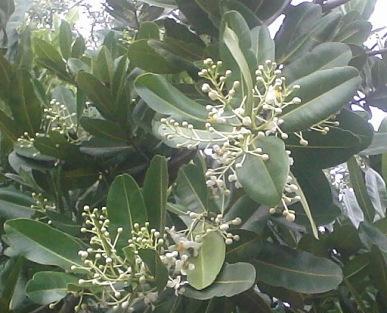Natural Regeneration :
- Natural regeneration is by seeds and coppice freely.
Artificial Regeneration :
- Propagated by Nursery raised seedling
Seed collection and Storage :
- Seed is collected in May – June.
- Pick fruits at appropriate maturity i.e. pale yellow pericarp stage by plucking from the branches.
- Cut open the pericarp to release the seeds for raising nursery.
- Seed rate 140 – 180 seeds/ Kg
- Germination capacity ranges from 60% - 89%.
- Seeds can be stored in gunny bags in well-aired room for at least a year
Seed Treatment :
- Seed treetment is not necessary
Nursery Technique :
- Seeds are directly sown in poly bags of size 13 x 25 cm
- Regular watering is essential.
- The seedlings need to be hardened for at least three months before field planting.
Plantation technique :
- For plantation the spacing is usually 4 m x 4 m.
- Pit size is 45 cm3
Care & Disease Control :
- Regular weeding is necessary once in six months interval.
- After three months of planting the soil need to enriched with 250 g Neem cake / plant or 500 g FYM.
- This can be repeated at one year interval.
- If termite problem exists in the soil, the plants can be provided with soil drenching of 500 ml (0.2%) chloripyriphos.
- At the end of two years pruning can be done so as to increase branching and thereby higher fruit yield.
Irrigation :
- For proper growth and survival it is necessary to give one or two waterings after planting. This is specifically required in arid regions.
- Irrigation after planting is not a prerequisite in areas having sufficient soil moisture and precipitation. Higher survival rate and better rate of growth is reported when soil and water conservation measures are also adopted.
Recommended Harvest :
Yield :
- It is one of the important TBO species with an annual average nut yield of 12 kg/ tree ( 5 year old) and 100 kg in 20 year old tree.
- Fruiting starts at 4-5 yrs. a five year old tree yields 3 kg kernel, ie.2.1L oil per tree.
- A 5 year old plantation with just 35 trees can yield 75 L oil, provided superior clones are planted.
- Less than 0.25 acres is sufficient for annual requirement of 75L oil.
- In 1 acre at 4x4 m 250 trees can be accommodated.
Agro Forestory :
- Planted in hedges and as a wind break.
- The tree is sometimes used in reforestation schemes
Major uses :
· It is a potential species valued for its seed oil.
· It is a good alternative to Casuarina as a beach windbreak, for soil stabilization and also to control soil erosion.
· It is amenable for agroforestry and is also intercropped with Acacia spp.
· Its kernel yields 50-70% oil which is directly being used as fuel in diesel engines without undergoing the trans-esterification process.
· Trans-esterified oil can also be used as biodiesel.
· Seed oil also called as Tamanu oil has medicinal uses in treating skin diseases and fetches high price ($4-$40/ 30 ml) in international market.
· With recently discovered plant properties like anti-HIV and anti-cancer active compounds, Calophyllum inophyllum can be placed amongst the most important multipurpose trees.
· The timber of this species referred to a ‘Bintagor’ is of superior quality and is popularly traded in South-East Asian countries
· It has demand for carving, furniture making, boat building, and flooring. It is a durable multi-purpose timber (density 560-900kg/m³).
Other uses :
Tannin or dyestuff:
Tannins are commonly present, especially in the bark (11.9%) but often also in the leaves. A decoction of the bark is sometimes used to toughen and dye fishing nets. The seed oil and the latex have occasionally been used in dyeing batik cloth in Java.
Market details :
If kernel collection and processing done by a farmer:
- Cost price of crude oil as per market rate : Rs.40 - 50/L*
- Cost of 1 kg oilcake : Rs.20-25/-*
*Subject to change according to market demands
Carbon stock :
0.140 tC/tree





